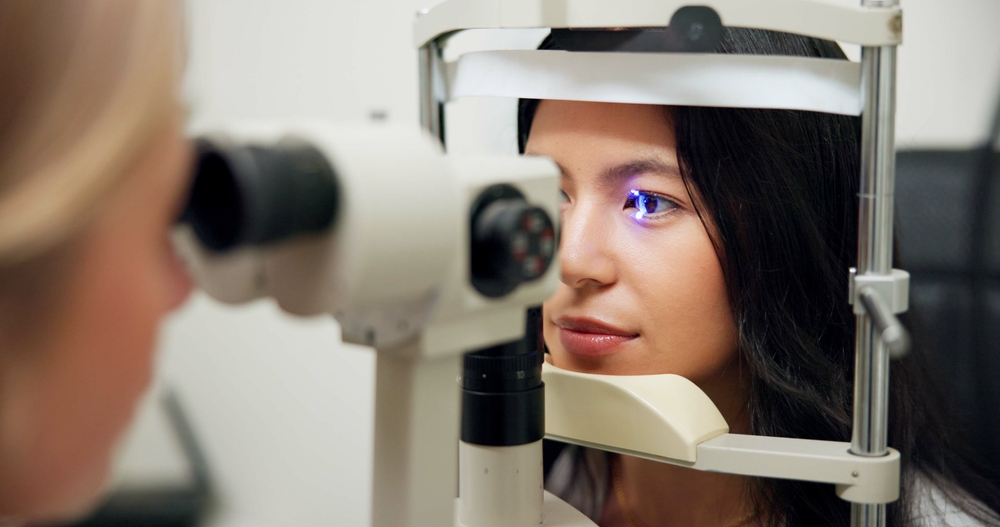Imagine waking up and immediately seeing the world in crisp detail without reaching for glasses or fumbling with contact lenses. For millions of people, LASIK has transformed this dream into reality.
However, while many desire freedom from visual aids, not everyone qualifies for this procedure. Keep reading to learn more about what makes someone a good candidate for LASIK.
What Is LASIK?

LASIK (Laser-Assisted In Situ Keratomileusis) uses advanced laser technology to permanently reshape your cornea, the clear front surface of your eye, correcting nearsightedness, farsightedness, and astigmatism.
Patients often enjoy complete freedom from visual aids and clearer, crisper eyesight than ever before. During the LASIK procedure, your eye surgeon creates a thin, hinged flap on your cornea’s surface.
Once lifted, a specialized excimer laser precisely removes microscopic amounts of corneal tissue. The corneal flap is then repositioned, adhering naturally without requiring stitches or bandages.
Many patients report improved vision within hours after surgery, and most can resume normal activities within just 24-48 hours.
Are You a Good LASIK Candidate?
While LASIK offers remarkable benefits, strict qualification criteria ensure optimal results and minimize complications. Here’s a comprehensive breakdown of the factors that determine whether you’re an ideal candidate:
1. Age Requirements

The FDA has approved LASIK only for individuals 18 years or older. This age restriction exists for good reason.
During adolescence and early adulthood, hormonal fluctuations and physical development can significantly affect vision stability. Performing LASIK on someone with an unstable prescription could lead to suboptimal results.
Though there’s no strict upper age limit, LASIK candidates typically achieve best results when under 40. After 40, age-related vision changes like presbyopia (difficulty focusing on close objects) may begin to emerge.
These natural changes can affect LASIK outcomes and may require additional procedures or reading glasses despite successful surgery.
2. Prescription Stability
A fundamental requirement for LASIK candidacy is having a stable prescription for at least one year before surgery. Frequent prescription adjustments indicate your vision is continuing to evolve, making it difficult to achieve lasting results from LASIK.
If your prescription changes after surgery, you might need glasses or contacts again for optimal vision.
3. Corneal Thickness
Since LASIK involves removing corneal tissue, you must have sufficient corneal thickness to maintain structural integrity after the procedure.
During your pre-LASIK evaluation, your doctor will use advanced mapping technology to measure your corneal thickness.
Patients with thin corneas typically don’t qualify for traditional LASIK due to higher complication risks, including corneal ectasia, which is a potentially serious condition that can lead to permanent vision impairment.
4. Dry Eye
Healthy tear production is essential for maintaining corneal health and ensuring proper healing after LASIK. The procedure temporarily disrupts normal tear film distribution and can exacerbate existing dry eye symptoms.
If you already experience chronic dry eye that hasn’t responded to treatment, you may not be a good candidate for LASIK.
5. Overall Eye Health
Beyond refractive errors, your eyes must be free from significant conditions or diseases that could interfere with healing or compromise surgical outcomes. Common disqualifying conditions include:

- Cataracts
- Glaucoma
- Corneal scarring
- Advanced macular degeneration
- Severe diabetic retinopathy
- Eye infections
During your comprehensive pre-LASIK evaluation, your ophthalmologist will thoroughly examine your eyes for these and other conditions that might affect your candidacy.
6. General Health
Your overall health also plays a vital role in determining LASIK candidacy. Certain systemic conditions can significantly impact healing and increase complication risks, such as diabetes or autoimmune conditions.
Additionally, pregnant or nursing women should postpone LASIK until several months after delivery or completion of breastfeeding, as hormonal fluctuations during these periods can temporarily affect vision and healing capacity.
7. Realistic Expectations
While most patients achieve 20/20 vision or better after LASIK, the procedure doesn’t guarantee perfect vision for everyone. Some patients may still need glasses for specific activities like night driving or reading fine print, particularly as they age.
Understanding these possibilities and maintaining reasonable expectations about what LASIK can realistically accomplish constitutes an essential component of candidacy.
Making an Informed Decision about LASIK
Determining whether you’re a good LASIK candidate involves careful evaluation by an experienced ophthalmologist. The comprehensive screening process typically includes:
- Detailed medical and ocular history review
- Visual acuity testing with and without correction
- Corneal mapping and thickness measurements
- Pupil size measurement
- Tear film evaluation
- Comprehensive eye examination
- Discussion of goals, expectations, and lifestyle factors
Only after this thorough assessment can your doctor confidently determine whether LASIK represents your best vision correction option.
Why a LASIK Consultation is Necessary
LASIK has transformed millions of lives by providing freedom from glasses and contacts. However, strict candidacy requirements exist to ensure optimal outcomes and minimize risks.
If you’re considering LASIK, schedule a comprehensive consultation with a qualified ophthalmologist like Dr. Pierre Alfred at The Eye Center, who specializes in refractive surgery, to determine your candidacy.
Schedule your appointment today at The Eye Center in Greenfield or Athol, MA, today!
